by Lorri | May 9, 2012 | UnCorked
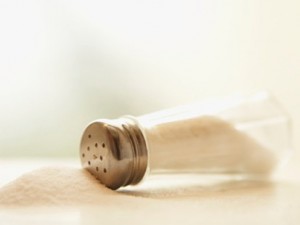 Unfortunately, when it comes to matching wine and food, there are a few foods that belong on the less glamorous list of misfits – foods notorious for awkward encounters with wine.
Unfortunately, when it comes to matching wine and food, there are a few foods that belong on the less glamorous list of misfits – foods notorious for awkward encounters with wine.
It isn’t that these foods don’t play well with others. Its more that they’re looking for a very specific set of characteristics in a mate.
Foods containing a lot of salt have a tendency to accentuate the taste of alcohol in wine. The salt can be from table salt or other ingredients such as soy sauce or anchovies. Because of their high acidity Champagne and sparkling wines can take on the saltiness in most foods. No need to look further to validate this rule than the classic pairing of Champagne and caviar.
THE VALUE
- NV Sumarroca Brut Cava, Spain (about $17 retail)
THE SPLURGE
- NV Pierre Peters Blanc de Blanc Champagne, France (about $56 retail)
Spicy foods tend to overpower the wine, often leading to people opting for beer. Beer is a popular match for these dueling dishes because it works to put the fire out on some of the hot spice. But wines such as Gewurztraminer and off-dry Rieslings offer cooling fresh acidity that doesn’t wither in the heat.
THE VALUE
- 2011 Wente Vineyards Riverbank Riesling, California (about $13 retail)
THE SPLURGE
- 2011 Snoqualmie Naked Riesling, Washington (about $15 retail)
Salads get a bad rap when it comes to wine pairing. Most likely the blame lies not with the salad but with the vinegar-based dressing. The traditional rule for fine dining was to not serve a salad with wine if the dressing contained vinegar or citrus. But if the salad is dressed with a simple drizzle of olive oil or a light vinaigrette, pairings are possible. To be safe, steer clear of heavy vinaigrettes.
THE VALUE
- 2011 Cellar No. 8 Chardonnay, California (about $12 retail)
THE SPLURGE
- 2011 Frey Vineyards Chardonnay, California (about $18 retail)
Ice cream and sorbet present special challenges, as almost any food that numbs your mouth will impair the taste of wine. On this pairing it is generally recommended that you will create a better match by pouring the wine on top of the ice cream. Because this is such a tricky pairing, Im offering only one suggestion.
THE SPLURGE
- 2010 Osborne Pedro Ximenez Sherry, Spain (about $25 retail)
by Lorri | May 2, 2012 | UnCorked
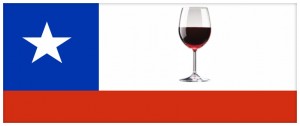 Bottle-by-bottle and sipby-sip, Chile is reinventing its image to get the U.S. wine drinker to take notice.
Bottle-by-bottle and sipby-sip, Chile is reinventing its image to get the U.S. wine drinker to take notice.
It has been in the past 30 years or so that Americans have become familiar with the South American country’s wines. (Until the 1970s, Chile had strong export restrictions.) And one of the first things American consumers noticed was the exceptional value of Chilean wine.
In addition to making wine that’s a great value, Chile has come a long way with its unique blend of old-world philosophy and new-world innovation. Key to the purity and diversity of its grapes, Chile is considered a viticulture paradise with ample sunshine, a dry climate and one of the few wine regions free of phylloxera (a tiny insect that attacks the roots of grapevines, depleting nutrients and slowly starving the vine).
Chile has adopted some of the most dramatic technology changes in the wine world. Until the latter part of the 20th century, most Chilean winemakers focused on local demand — simple oxidized whites and faded reds. But in the late 1980s, growers and producers made a commitment to secure a successful export market. They invested in their vineyards, overhauling and replacing outdated and tired equipment, adding oak barrels, stainless-steel vats and practicing modern winemaking techniques.
With Chile’s transformation came wines at their best, packed with youthful, vibrant fruit. Cabernet Sauvignon, merlot, carmenere and the emerging syrah grapes are the most widely planted reds. Chardonnay and sauvignon blanc remain the country’s best examples of whites.
THE VALUES
- 2011 Conde de Velazquez Cabernet Sauvignon, Chile (about $10 retail)
- 2011 Concha y Toro Xplorador Chardonnay, Chile (about $10 retail)
- 2010 Concho y Toro Casillero del Diablo Cabernet Sauvignon, Chile (about $12 retail)
- 2010 La Playa Block Selection Merlot, Chile (about $11 retail)
THE SPLURGES
- 2010 Terra Andina Altos Malbec, Chile (about $20 retail)
- 2010 Baron Philippe Rothschild Los Vascos Reserve, Chile (about $24 retail)
- 2010 Veremonte Primus Red Wine, Chile (about $25 retail)
by Lorri | Apr 25, 2012 | UnCorked
 A recent Uncorked column on chardonnay had many readers sending feedback on the continued love of this grape (making me realize I may not be writing about this superstar enough). Along with various emails praising a column devoted solely to chardonnay came a flurry of requests for more values and fewer splurges. Many readers also wanted more 1.5-liter and box options for large parties and cost savings.
A recent Uncorked column on chardonnay had many readers sending feedback on the continued love of this grape (making me realize I may not be writing about this superstar enough). Along with various emails praising a column devoted solely to chardonnay came a flurry of requests for more values and fewer splurges. Many readers also wanted more 1.5-liter and box options for large parties and cost savings.
I put my palate to the test and searched our market for the best chardonnays that fit into a price range under $15 for standard bottles, boxed for $25 or less and 1.5-liters for less than $20.
VALUES UNDER $15
- 2011 Hess Collection Chardonnay, California (about $13 retail)
- 2011 Santa Rita 120 Chardonnay, Chile (about $10 retail)
- 2011 Gnarly Head Chardonnay, California (about $11 retail)
- 2011 Toad Hollow Chardonnay, California (about $15 retail)
- 2011 Root 1 Chardonnay, Chile (about $12 retail)
- 2011 Little Penguin Chardonnay, Australia (about $8 retail)
- 2011 Concannon Chardonnay, California (about $10 retail)
BOXED OPTIONS
- 2011 Pepperwood Grove, California (about $20 retail)
- 2011 Bota Box Chardonnay, California (about $19 retail)
- 2011 Black Box Chardonnay, California (about $25 retail)
- 2011 FishEye Chardonnay, California (about $16 retail)
1.5-LITER BOTTLE
- 2011 Lorval Chardonnay, France (about $12 retail)
- 2011 Lindeman’s Bin 65 Chardonnay, Australia (about $14 retail)
- 2011 Beringer Vineyards Chardonnay, California (about $18 retail)
- 2011 Columbia Crest Two Vines Chardonnay, California (about $18 retail)
by Lorri | Apr 18, 2012 | UnCorked
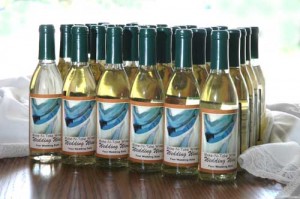 Brides are finalizing their spring and summer wedding plans — some with extreme relief and others with overwhelming stress. With a wealth of wedding planning advice, most have confidently confirmed the dress, flowers and cake, but the celebratory drink sometimes is a last-minute thought.
Brides are finalizing their spring and summer wedding plans — some with extreme relief and others with overwhelming stress. With a wealth of wedding planning advice, most have confidently confirmed the dress, flowers and cake, but the celebratory drink sometimes is a last-minute thought.
The most important first step in choosing the ideal wine is your budget. Knowing how much you want to spend for your wine and beverages is the starting point for your caterer, retailer or consultant.
Exactly how much wine to buy depends on the time of day, number of guests and overall format of your reception. A daytime toast with wedding cake will require considerably less wine than an evening of dinner and dancing. For evening receptions, most wedding planners figure on each guest drinking two glasses of wine every two hours. If you’re without a consultant to tally how much wine to order there are many websites with wedding wine calculators. RealSimple. com offers an easy calculation based on the number of guests, type of beverage and time of day for the big event.
With your style in mind, make your plans based on how many people you will be serving at the reception. If you plan for 300 guests, an expensive vintage wine most likely will not be necessary. However, if your wedding will be intimate, in a home or small setting, you may want to give more attention to detail and stay with my past advice: Buy the best wine you can afford.
Choosing the style of wine for a reception can be straightforward if you are only serving cake and sweets. A glass of Champagne or sparkling wine lends a celebratory touch and an easy resolution. If your menu is more complex, select food-friendly wines such as chardonnay, pinot grigio, merlot, pinot noir and cabernet sauvignon. And if you still want the bubbly toast, choose a sparkling wine from California or Australia, where many finds are under $10 a bottle.
THE VALUES
- NV Seaview Brut, Australia (about $10 retail)
- 2011 Chateau Bonnet Bordeaux Blanc, France (about $14 retail)
- 2011 Santa Rita 120 Merlot, Chile (about $11 retail)
THE SPLURGES
- 2007 Argyle Brut Sparkling, California (about $34 retail)
- 2010 Cambria Katherine’s Vineyard Chardonnay, California (about $28 retail)
- 2009 Clos Pegase Napa Valley Merlot, California (about $31 retail)
by Lorri | Apr 11, 2012 | UnCorked
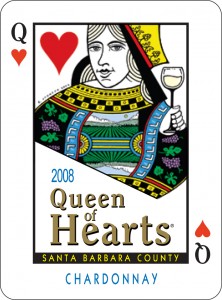 If cabernet sauvignon were known as “king” of the wine world, then chardonnay would be “queen.”
If cabernet sauvignon were known as “king” of the wine world, then chardonnay would be “queen.”
Like a chameleon tweaking its pigmentation to blend into its environment, chardonnay’s versatility knows few bounds. It can be left “naked” or treated with oak, undergo malo-lactation, be aged sur lie (French for on the lees, the sediment of grape particles and dead yeast cells that accumulates during fermentation) or even blended with other grapes, with each bottle revealing a diverse profile.
It’s a happy-go-lucky grape known by many as the “vineyard growers dream” — easy to please, no hassle, grows in diverse climates, diverse soils and, to the growers’ pleasure, produces incredibly high yields.
It is no wonder chardonnay lines the retail store shelves in so many styles and price ranges.
Even with its range and versatility, not all chardonnay is created equal, with some regions producing distinctive styles.
PLAYING IT COOL
Chablis is the coolest part of Burgundy and is noted for its unique Kimmeridgian soils (soil with fossilized shells). This combination of climate and soil means the chardonnay grape must struggle to ripen, resulting in a more steely, crisp style, quite unlike the full-bodied flavors from warmer climates.
THE VALUE
- 2010 Joseph Drouhin Chablis, France (about $26 retail)
THE SPLURGE
- 2010 Jean-Marc Brocard Monte de Tonnerre Chablis, France (about $47 retail)
HOME IS WHERE THE HEART IS
Comprising the southern half of Burgundy’s famed Cote d’Or (slope of gold) is the Cote de Beaune, Chardonnays’ sacred ground. Chardonnay from this region is considered to be the best of the world.
To really get to know the homeland in which chardonnay is worshiped you will need to get to know the various regions because the styles can range from buttery, creamy, nutty and even light-bodied depending on the producer and vineyard.
The producers tend to use a mixture of used and new oak for their best chardonnays.
THE VALUE
- 2009 Olivier Leflaive Puligny Montrachet, France (about $64 retail)
THE SPLURGE
- 2009 Girardin Les Combettes Puligny Montrachet, France (about $90 retail)
CALIFORNIA DREAMING
California chardonnay is extremely varied, from rich complex styles to the heavy, high alcohol sweet styles. And with the varying styles come a range in prices. You’ll find some of the most exceptional examples of this grape’s complexity in the cooler regions of Sonoma, Napa and Carneros.
THE VALUE
- 2010 Robert Mondavi Napa Valley Chardonnay, California (about $22 retail)
THE SPLURGE
- 2009 Kistler Les Noisetiers Sonoma Chardonnay, California (about $70 retail)
DOWN UNDER
Australian chardonnay has a distinctive citrus, lime flavor when grown in ideal conditions and with a reliable producer. (The best are Adelaide Hills or Margaret River.) If the wine label simply states “Southeastern Australia” or “Australia” without listing a specific region it is most likely made with blended fruit from numerous regions.
These blends may make great bargains, but they are not for aging.
THE VALUE
- 2010 Grant Burge Chardonnay, Australia (about $26 retail)
THE SPLURGE
- 2010 d’Arenberg Lucky Lizard Chardonnay, Australia (about $49 retail)
by Lorri | Apr 4, 2012 | UnCorked
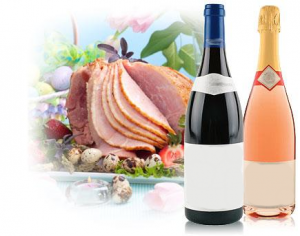 Ham at Easter dinner is a common tradition the world over, and the American table is no exception. However, ham tends to be a tricky match for wine. Cooks in many parts of the world, particularly those who have been curing ham and making wine for centuries, have mastered this task. Prosciutto, jamon and presunto — with their straightforward smoky, salty flavors — are not frequently mismatched at Easter tables in Italy, Spain and Portugal.
Ham at Easter dinner is a common tradition the world over, and the American table is no exception. However, ham tends to be a tricky match for wine. Cooks in many parts of the world, particularly those who have been curing ham and making wine for centuries, have mastered this task. Prosciutto, jamon and presunto — with their straightforward smoky, salty flavors — are not frequently mismatched at Easter tables in Italy, Spain and Portugal.
It’s primarily at the American table that things get complicated. When you add ingredients such as honey and cloves, or serve a ham with a brown sugar-pineapple glaze, the once salty ham becomes a salty-sweet canvas of conflicting flavors. The wrong wine pairing will result in competing flavors and aromas that can accentuate bitterness and tannins found in wine.
Look for light red wine without overpowering tannins and white wine without searing acidity. A few of the best matches are merlot, pinot noir, rose, Riesling, gruner veltliner, Beaujolais and Chablis.
THE VALUES
- 2010 Cline Cool Climate Sonoma Coast Pinot Noir, California (about $15 retail)
- 2009 Oriel Or tolan Falkenstein Gruner Veltliner, Austria (about $25 retail)
- 2010 Hogue Cellars Genesis Riesling, Washington (about $14 retail)
- 2010 Georges Duboeuf Chateau de Vierres Beaujolais Villages, France (about $15 retail)
THE SPLURGES
- 2009 Bell Wine Cellars Yountville Merlot, California (about $36 retail)
- 2009 Jean Marc Brocard Monte de Tonnerre Chablis, France (about $44 retail)
- NV Delamotte Brut Rose Champagne, France (about $99 retail)
- 2009 Presqu’ile Vineyards Pinot Noir, California (about $64 retail)
 Unfortunately, when it comes to matching wine and food, there are a few foods that belong on the less glamorous list of misfits – foods notorious for awkward encounters with wine.
Unfortunately, when it comes to matching wine and food, there are a few foods that belong on the less glamorous list of misfits – foods notorious for awkward encounters with wine.
 A recent Uncorked column on chardonnay had many readers sending feedback on the continued love of this grape (making me realize I may not be writing about this superstar enough). Along with various emails praising a column devoted solely to chardonnay came a flurry of requests for more values and fewer splurges. Many readers also wanted more 1.5-liter and box options for large parties and cost savings.
A recent Uncorked column on chardonnay had many readers sending feedback on the continued love of this grape (making me realize I may not be writing about this superstar enough). Along with various emails praising a column devoted solely to chardonnay came a flurry of requests for more values and fewer splurges. Many readers also wanted more 1.5-liter and box options for large parties and cost savings. Brides are finalizing their spring and summer wedding plans — some with extreme relief and others with overwhelming stress. With a wealth of wedding planning advice, most have confidently confirmed the dress, flowers and cake, but the celebratory drink sometimes is a last-minute thought.
Brides are finalizing their spring and summer wedding plans — some with extreme relief and others with overwhelming stress. With a wealth of wedding planning advice, most have confidently confirmed the dress, flowers and cake, but the celebratory drink sometimes is a last-minute thought.
 Ham at Easter dinner is a common tradition the world over, and the American table is no exception. However, ham tends to be a tricky match for wine. Cooks in many parts of the world, particularly those who have been curing ham and making wine for centuries, have mastered this task. Prosciutto, jamon and presunto — with their straightforward smoky, salty flavors — are not frequently mismatched at Easter tables in Italy, Spain and Portugal.
Ham at Easter dinner is a common tradition the world over, and the American table is no exception. However, ham tends to be a tricky match for wine. Cooks in many parts of the world, particularly those who have been curing ham and making wine for centuries, have mastered this task. Prosciutto, jamon and presunto — with their straightforward smoky, salty flavors — are not frequently mismatched at Easter tables in Italy, Spain and Portugal.